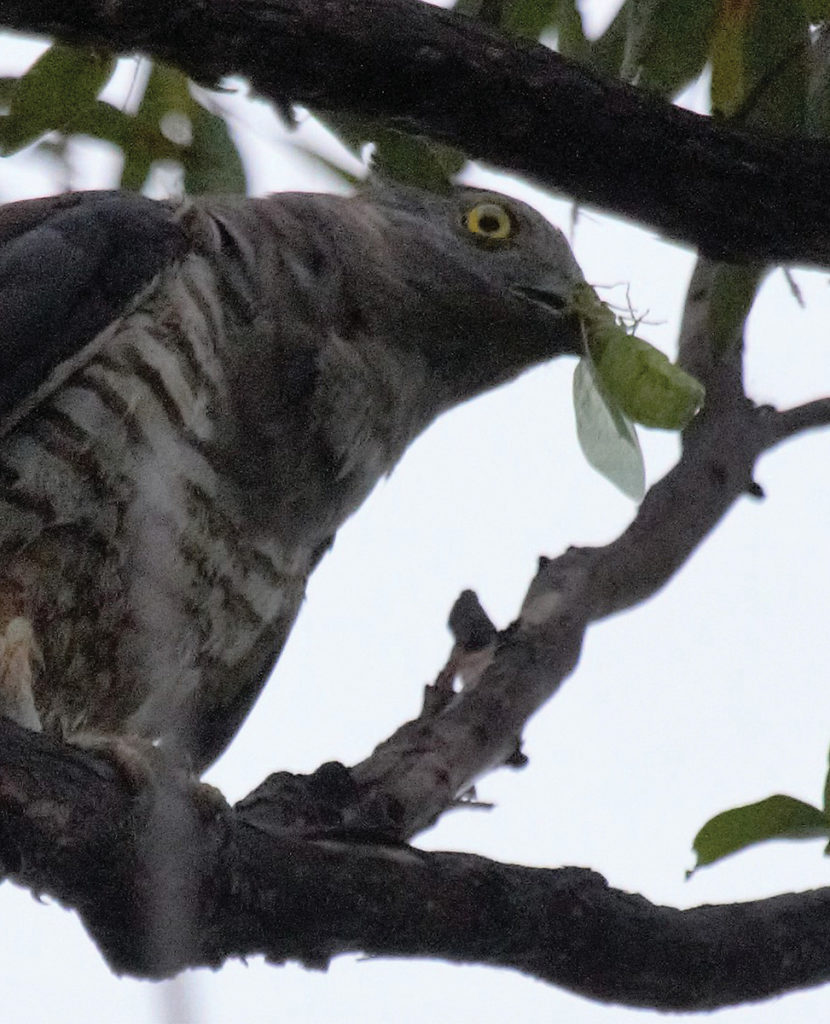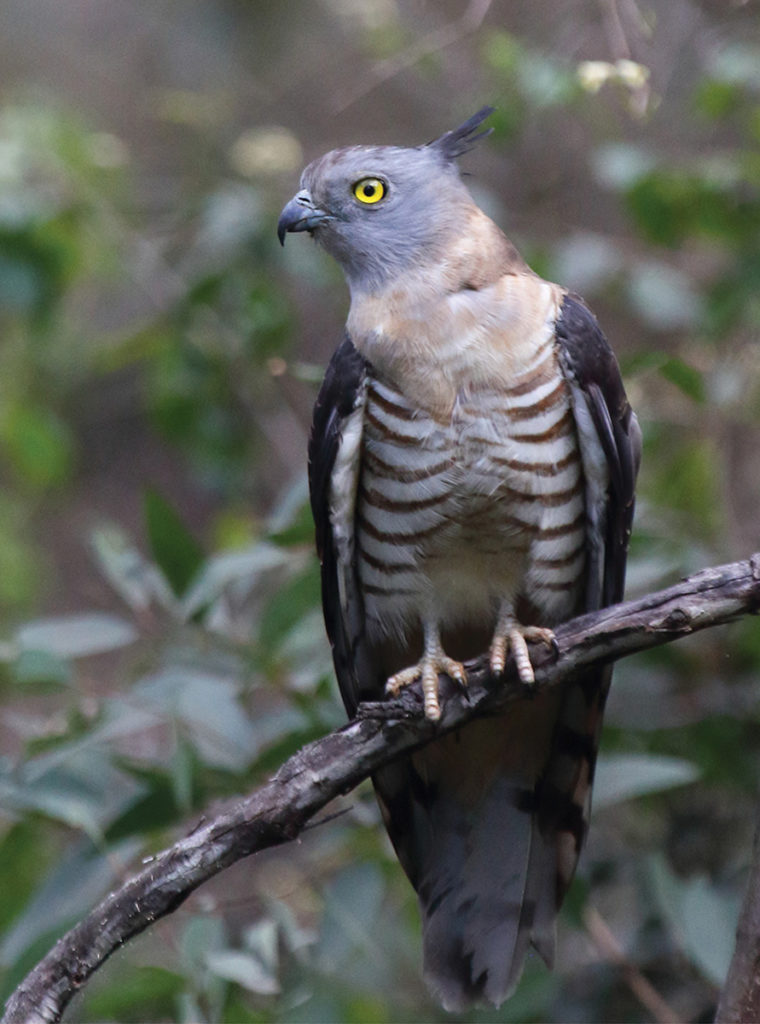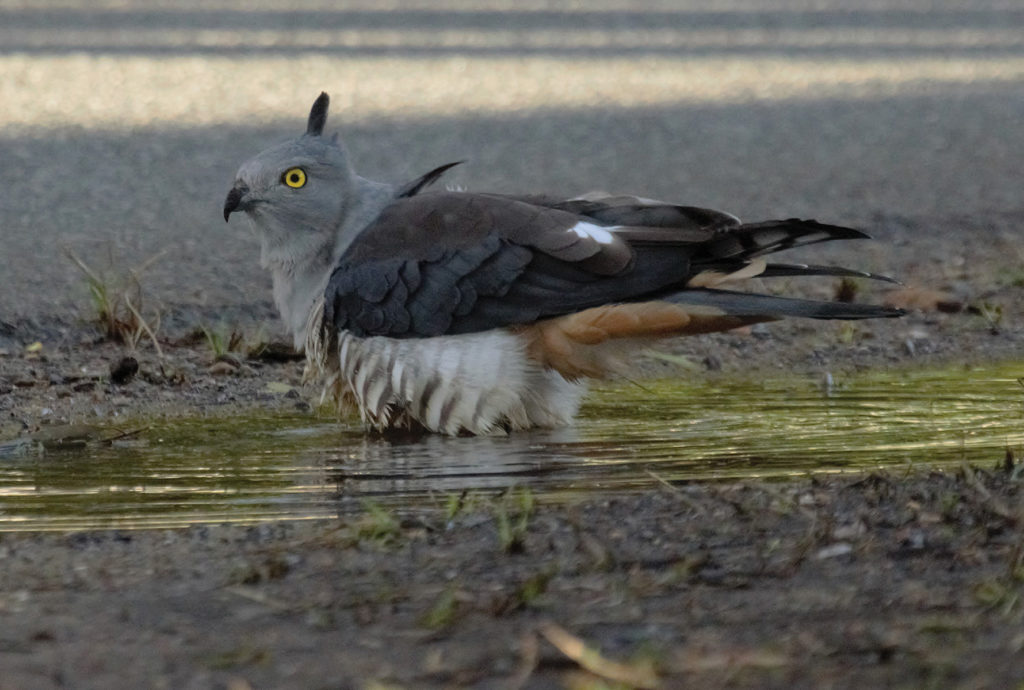In reviewing Australian Birds of Prey in Flight, I saw an opportunity to write about a commonly seen raptor in SEQ, the Pacific Baza. I chose the baza because it is reasonably easy to identify (for a raptor) when perched or flying especially if using binoculars.
I am lucky to have a pair of bazas visit my local area for a few weeks every year. Their loud double-note call (written as “whee chu”) alerts me to their presence. For the last two years, they have had a young bird in tow and all three of them are very vocal.
Bazas are great birds to watch. Actually, all birds are, but bazas are so engaging with their large, round yellow eyes and somewhat dopey look. They are not too fussed by having humans close-by and sometimes perch only ten or so metres off my back deck.
Watching them hunt is fascinating. They basically crash into the foliage of tall trees, feet first, trying to catch stick insects, large grasshoppers, treefrogs, small reptiles or other small prey. I have seen them catch and eat cicadas and stick insects. They often glide slowly from tree to tree looking for prey. Unlike many other raptors that fly off as soon as a person shows up, Pacific Bazas, often continue to hunt with people around enabling you to follow them through the forest.

Bazas have a few physical features that stand out, helping to narrow down their identification. Their striking yellow eyes are probably the first thing you will notice. Depending on what angle you see them from, bazas have a prominent crest on the back of their head giving them their alternate name of Crested Hawk. Their lower breast has beautiful, dark horizontal striping.

When in flight, their wings are particularly wide (not wingspan width, but width of each wing) and you can often see the barring on their breast if using binoculars.
Pacific Bazas are found throughout SEQ from subtropical rainforests to open woodlands and in suburban areas; wherever their prey is found. Bazas ‘show up’ in SEQ usually from early winter to mid-spring and stay for their breeding season (October-January). During this time they are vocal and can readily be seen. It is not really known where they go to outside of their breeding season, but there are certainly fewer sightings in SEQ and if they are seen, the birds are usually silent.
Although I have not witnessed it myself, bazas have a spectacular courtship display whereby the male flies up high, then stalls in flight, and then falls straight down with closed wings before rising again and repeating the performance. Although we are now heading into the quiet time for bazas in SEQ, I recommend keeping an ear open for their call and I hope you are lucky enough to witness one of their hunting or courtship displays.

Article and photographs by Deborah Metters
Regional Coordinator
